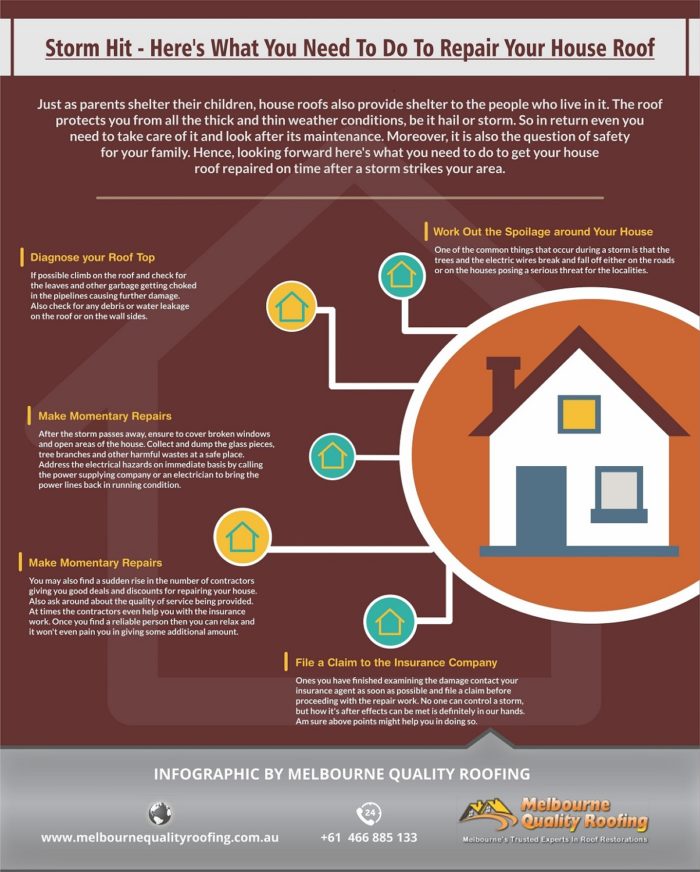How Weather Impacts Your Roof Covering: A Novice'S Overview
How Weather Impacts Your Roof Covering: A Novice'S Overview
Blog Article
Content Composed By-Monaghan Finch
When it pertains to your roof covering, the weather condition plays an important duty in its general health and life expectancy. You could not understand just how rainfall can lead to leaks or exactly how heavy snow can emphasize the structure. Even the sun's relentless rays can weaken your roofing products with time. It is essential to recognize these effects, however what can you do to secure your roofing from the components? Checking out upkeep strategies and material options could be essential to guaranteeing your roof stands strong versus whatever Mother Nature throws its way.
Effects of Moisten Roofing
Rain can be a silent opponent to your roofing, causing both prompt and lasting damage. When water permeates right into fractures or gaps, it can lead to leakages, which may not show up today. You may observe a stain on your ceiling, yet by then, the moisture can have currently jeopardized your roof covering structure.
In time, constant direct exposure to rain can weaken roofing products. Shingles might warp, crinkle, and even degenerate, leaving your home susceptible to further water breach. Mold and mold flourish in moist conditions, which can jeopardize your indoor air quality and cause health concerns.
Standing water on your roofing can also create major issues. It includes unnecessary weight, increasing the threat of architectural failing. Plus, it can speed up the wear and tear of your roof covering materials, making substitutes more constant and costly.
To secure your roofing, guarantee your seamless gutters are clean and operating effectively to draw away rainwater away. visit the website can help you capture potential issues prior to they rise.
Taking these steps now can save you money and time in the future, maintaining your home secure and completely dry.
Effect of Snow and Ice
When winter months shows up, snow and ice can present significant hazards to your roof covering, much like rainfall. Collected snow can be fairly heavy, and if it doesn't slide off, it can create a hazardous lots that your roofing system mightn't have the ability to support. This stress can cause sagging, leaks, and even architectural failing.
Ice can also trigger problems, especially with ice dams. When snow on your roofing melts, it can move down and refreeze at the eaves, producing a dam that protects against proper drain. Water then backs up under tiles, leading to leaks and water damage inside your home.
To protect your roofing, it's essential to maintain rain gutters clear of debris, permitting appropriate drain. Regularly inspecting your roof covering for signs of wear and damage can help capture issues early.
If you see a significant amount of snow, consider employing a specialist to remove it safely. Remember, it's much better to be aggressive regarding snow and ice than to manage expensive repair services in the future. Taking these steps can help guarantee your roofing system withstands the winter months without severe concerns.
Sunlight and Temperature Challenges
While you could enjoy warm days, long term direct exposure to sunlight and extreme temperatures can be destructive to your roofing system. UV rays can break down roof products with time, resulting in bending, breaking, or fading. If your roof covering's tiles are made from asphalt, they might end up being fragile under intense heat, making them much more prone to damages.
Additionally, high temperatures can enhance the risk of thermal development. As materials broaden throughout the warmth of the day and agreement during the night, this consistent cycle can create stress on your roof, possibly causing leakages or other structural concerns.
https://www.dailycommercial.com/story/lifestyle/2020/10/09/roof-replacement-five-big-changes/5905153002/ may additionally notice raised energy costs as your cooling system works tougher to deal with warm buildup in your attic.
It's important to choose roofing materials that can withstand your neighborhood climate's temperature level fluctuations. Light-colored or reflective roof can help reduce warmth absorption, while correct ventilation in your attic can maintain a well balanced temperature level.
great post to read and upkeep can also catch issues early, ensuring your roofing system stays in ideal condition. By staying proactive, you'll protect your financial investment and expand your roofing's life expectancy despite the difficulties postured by sunshine and temperature level extremes.
Final thought
Finally, understanding exactly how weather condition influences your roof covering is critical for keeping its stability and durability. Rain can bring about leaks, snow and ice can develop heavy loads, and long term sunlight direct exposure can create materials to break down. By staying aggressive with normal maintenance and choosing the appropriate materials, you can safeguard your roof covering from the components. Keep in mind, a well-kept roofing not just boosts your home's value but also maintains you safe and comfy for many years to come.
